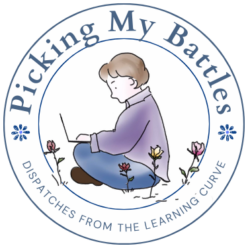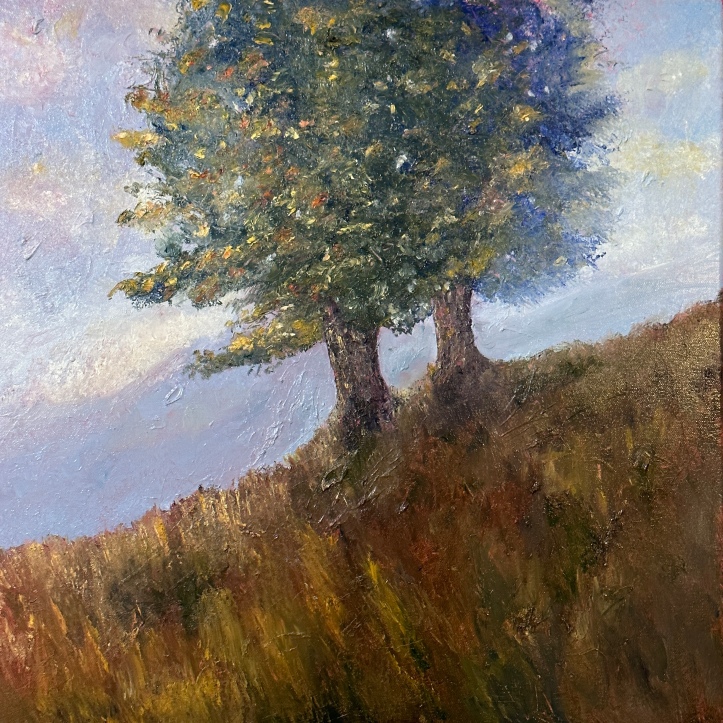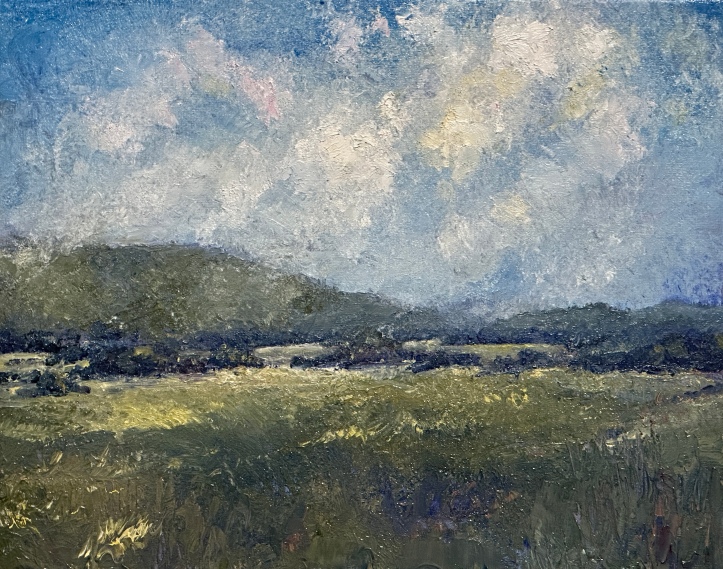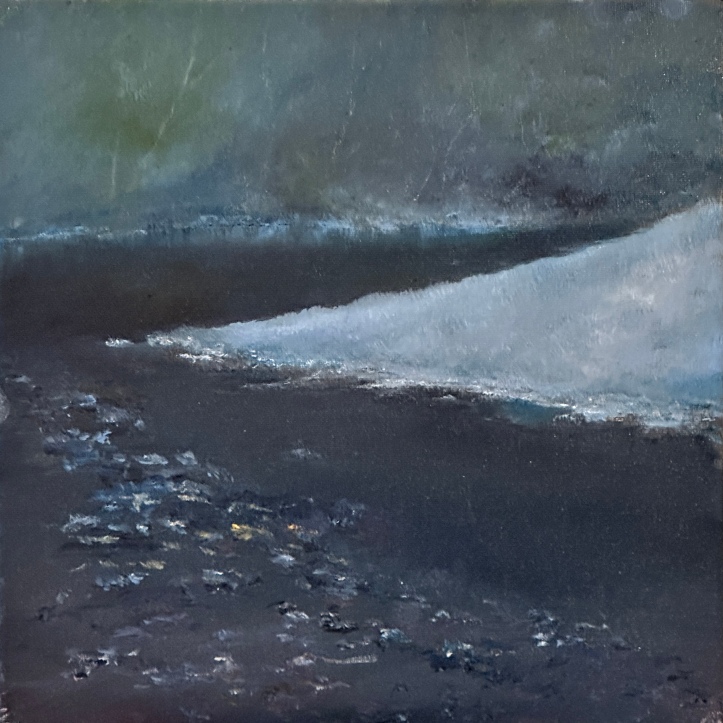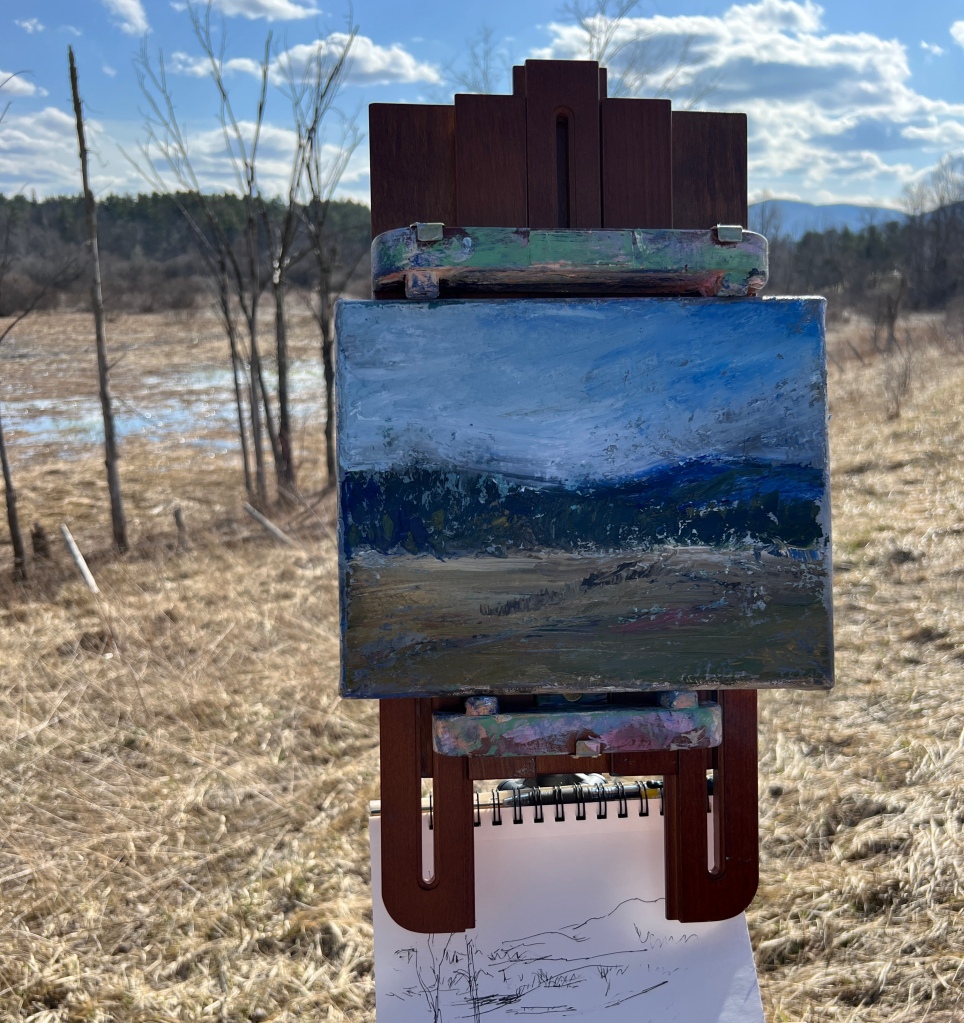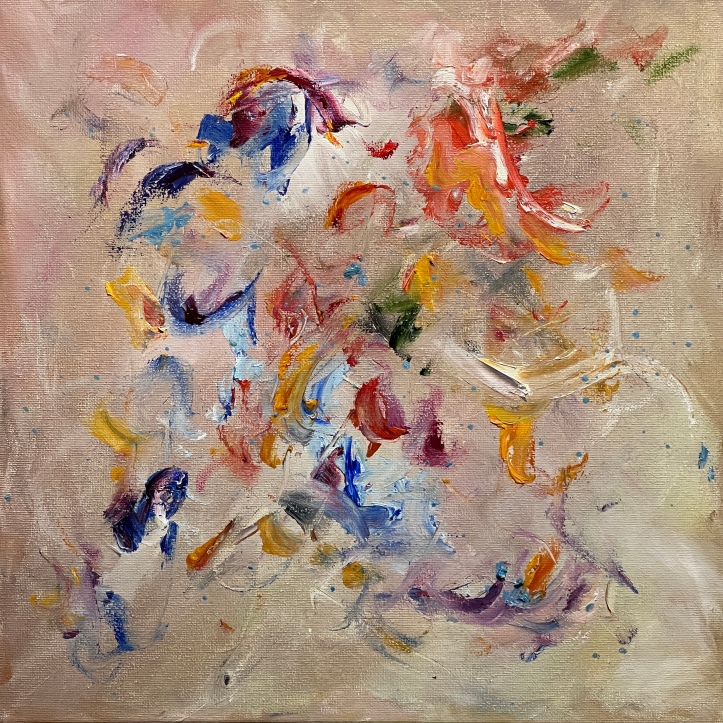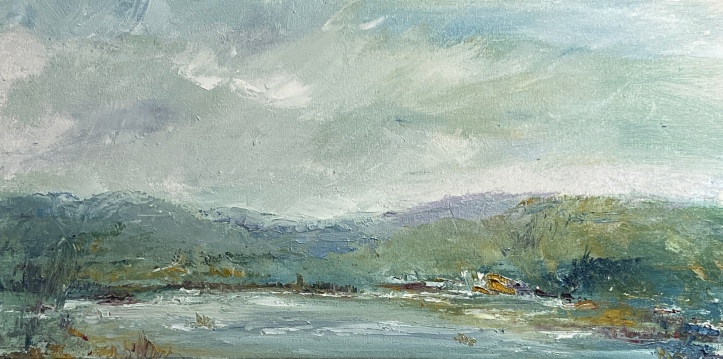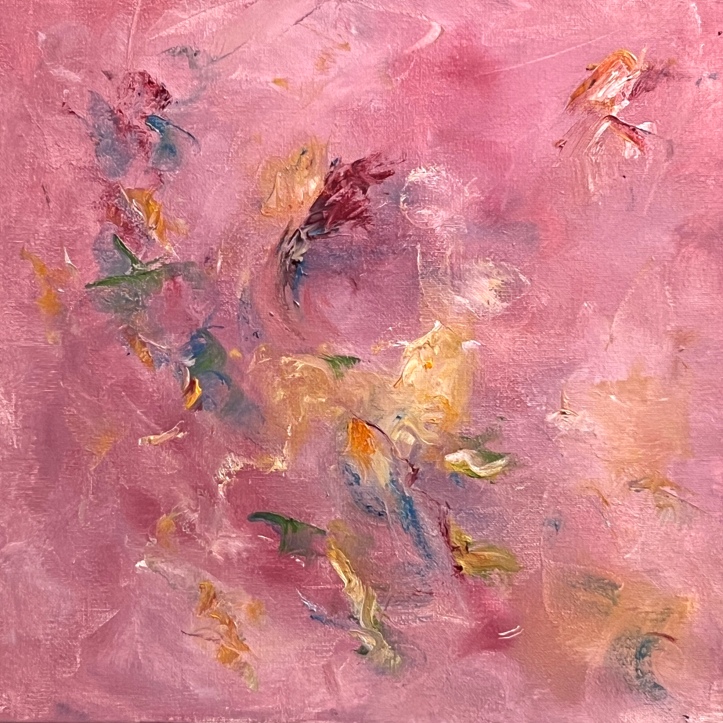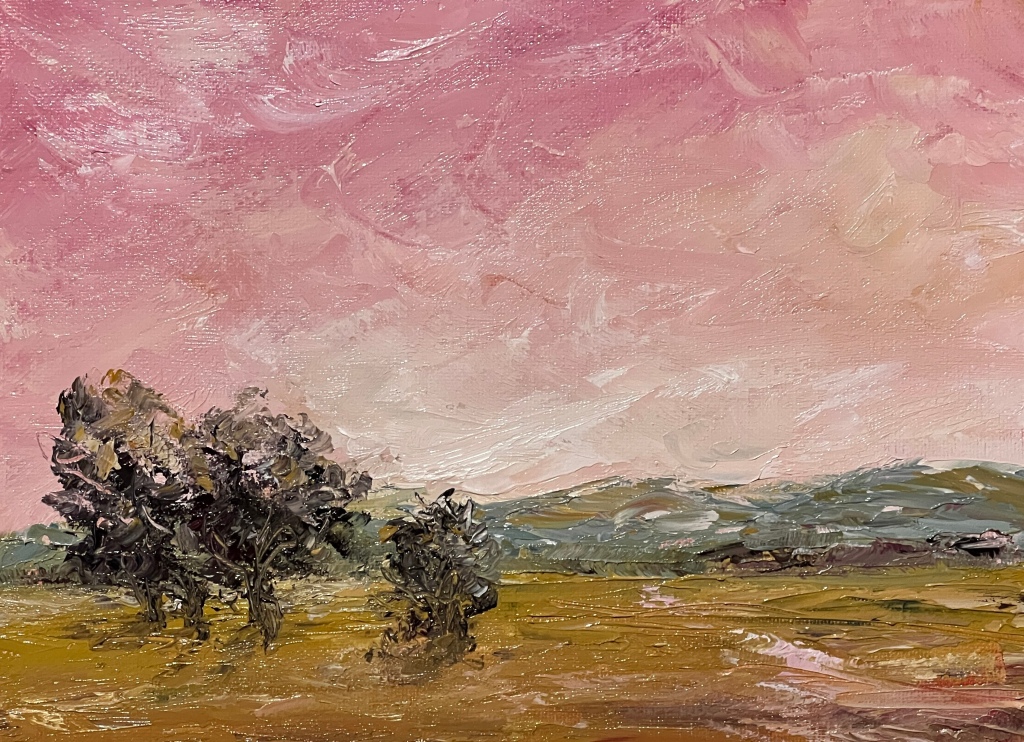Sometimes to help someone, you need to disconnect just enough from your empathy to keep the other person from the fog instead of marching into it holding their hand. I’ve had a few such cases at work lately. I can recognize my own traumas in the person I’m helping, but to use the lessons of experience and education, had to resist the temptation of wading into memories.
One of the pitfalls of that professional detachment is that it is sometimes hard to reconnect with other parts of life.
Painting is usually my lifeline, but the latest sessions felt as flat as the rest of my day. I’ve recently moved into abstraction, channeling the emotions inspired by our local mountains and the storms that move through them, and the emotion wasn’t there.
I tried faking the emotion. Then I tried painting the flatness.
Finally I decided to fight the flatness and get out of the studio for a day and go to the fields and woods.
I hadn’t been plein air painting since summer, and I rarely paint outside in the winter. Sometimes, I paint in the car with watercolors, but last Saturday, I knew I needed the kiss of the cold and wind to bring my whole brain to life.
It was bitter cold when I parked the car by my favorite field. I had my fingerless mittens and layers of shawl and scarf, and, after finding the right way to position my easel by the car door so that the wind wouldn’t blow things over and wick the heat from my body, I queued up a new playlist of mostly melancholy music to match my mood.
I was keen to get the racing clouds as they brushed the tops of the mountains with a new dusting of snow. I could feel my fingertips freezing, but there was a glow of life in the midst of this winter scape. I could hear ice cracking on the nearby Battenkill as the sun briefly emerged, and some creature, disturbed my presence, rustled nearby, invading my iPod playlist with their own music.
For the first time in days I was fully awake, intensely aware of every emotion, completely at peace, and seeing the answers to a question that had been plaguing me for months: Why do I need to paint nature?
Is there a point to painting nature when the world is in chaos? Aren’t there more important subjects? Why do I need nature in order to paint?
The answers had happened as winter’s soundtrack and sights and my moving brush reconnected with the same emotions that make me want to help and hope for a world at peace in the first place.
Like this:
Like Loading...

